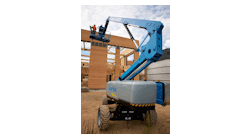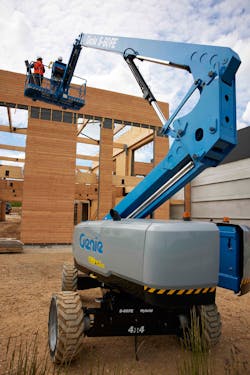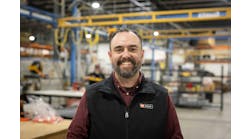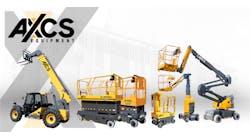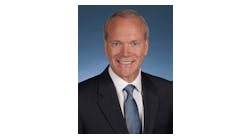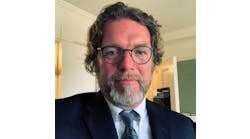Interview with Genie’s Simon Meester: Customers Are Optimistic
Simon Meester, president, Terex AWP (Genie), who will become president and CEO of Terex Corp. at the beginning of 2024, talks about hybrid and electric machines, increasing demand, positive trends for the aerial business, and more.
RER: What new equipment enhancements or developments has your company come up with in the past year?
Meester: Our newest model is the GTH-1256 telehandler, which we launched in January and debuted at ARA in February. Prior to that, late in 2022, we introduced our new electrified S-60 DC and S-60 FE telescopic boom lifts, as well as a Lithium-Ion battery option for slab scissor lifts.
These introductions all have a few things in common and are indicative of Genie’s commitment to quality, and to delivering value to our customers — they were purposefully designed to meet the needs of modern-day jobsites; they were rigorously tested to ensure reliability and durability; and they require less maintenance and offer a lower total cost of ownership.
Obviously, the trend towards electrification of equipment has accelerated in the past year. Are you finding greater interest and acceptance among your rental company customers? How about among end users?
Meester: By now, many equipment owners and operators have had experience with the newer generations of electrified equipment, which, when I say “electrified,” I’m talking about both hybrid and electric machines. When implemented correctly, both hybrid and electric machines perform as well as, or in many cases better than, their diesel counterparts. They also use energy more efficiently and require less maintenance.
Here in North America, our FE hybrid booms have been available and on jobsites for more than six years now, and we think that will continue to be the best solution for our customers for the near future. They not only offer the rugged performance needed for demanding outdoor jobsites; they use less fuel — a single tank can last a full, standard work week in hybrid mode — and have reduced emissions. In electric mode, FE hybrid booms offer all the benefits of an electric boom and can work a full, standard workday on a single charge.
Continuing on the topic of electrification and battery-powered equipment, there is still a perception among many that they don’t perform as well as diesel-powered machines. Any thoughts on that?
Meester: As more and more equipment owners and operators have exposure to today’s electrified machines they’re finding that they can perform as well or better than diesel machines.
In fact, one feature that operators, in particular, appreciate about our FE hybrid machines is that, in hybrid mode, the machine actually charges the battery. So, even if the battery is depleted, the machine can still start and run. Which means there isn’t any downtime on the jobsite if the battery is dead.
Has the charging infrastructure improved for electric equipment on job sites?
Meester: This is still one of the biggest barriers to full electrification. Hybrid machines use less fuel and reduce emissions while providing the additional flexibility that many jobsites need and will continue to need for a while.
It appears that the coming year should be strong for aerial equipment sales. Do you expect to see a lot of opportunities in infrastructure spending? Increased industrial and/or non-residential work? An onshoring trend in North America?
Meester: We are optimistic about the market outlook in North America. Utilization rates remain strong, and customers are optimistic. Infrastructure spending is one area that we believe will continue to propel demand. Additionally, demand is strong in other industries as well. On top of this, our customers are in the replacement cycle and we’re still seeing pent-up demand as a result of the supply chain challenges that started in 2021.
Manufacturers are expressing strong optimism about the state of the business. Demand seems strong and increased infrastructure spending in the U.S. and multiple countries creates need for aerial equipment. In the U.S., the onshoring trend is driving the momentum for large construction projects and with infrastructure legislation, many projects are likely to come to fruition. Plants to produce batteries, semiconductor chips, new refineries and industrial facilities, warehouses and the repurposing of existing buildings are all positive trends for the aerial business. Many rental companies aged their fleet during the pandemic and the difficulty of obtaining equipment. However now with improvements in the supply chain, lead times are shortening somewhat, and there’s a strong demand for replacement equipment.
That doesn’t mean the supply chain issues have gone away, but they have, apparently, eased somewhat.
Are the supply chain issues still a major problem for your company and are lead times still long or are things more normal?
Meester: We started to see improvements in the supply chain earlier this year, with some regions and some component categories improving faster than others. Those improvements have continued, and although we still have a strong backlog, we’re seeing some improvements in terms of lead times and we’re optimistic that things are trending in the right direction.
